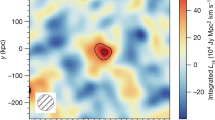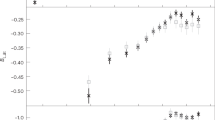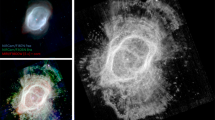Abstract
THE continuous spectrum of Nova 452.1934 Herculis has been showing a change in the spectral energy distribution which is hard to explain from the point of view of pure temperature radiation. Fig. 1, curve a, presents the continuous spectrum observed on December 31, 1934, by Barbier, Chalonge and Vasy1, and curve b the spectrum on March 6, 1935. Intermediate curves between these extremes will be found in the same publication. (The dotted line has been added by me.) Nova Geminorum 2 showed, during 1912–13, a similar energy distribution curve with one or even two secondary maxima in the early stage, which gradually disappeared2.
This is a preview of subscription content, access via your institution
Access options
Subscribe to this journal
Receive 51 print issues and online access
$199.00 per year
only $3.90 per issue
Buy this article
- Purchase on Springer Link
- Instant access to full article PDF
Prices may be subject to local taxes which are calculated during checkout
Similar content being viewed by others
References
D. Barbier, D. Chalonge, É Vasy, C. R., 201, 128 (1935).
W. H. Wright, Lick Obs. Publ., 14, II. A. Brill, Publ. Astrophys. Obs. Potsdam, 23, 70 (1914).
W. M. Cohn, Z. Phys., 75, 544 (1932). Astron. Nachr., 245, 378 (1932). W. Finkelnburg, Astrophys. J., 80, 313 (1934).
C. J. Anger, Harvard Coll. Obs. Bull., 882 (1931).
Author information
Authors and Affiliations
Rights and permissions
About this article
Cite this article
COHN, W. Continuous Spectra of Certain Types of Stars and Nebulæ. Nature 137, 150–151 (1936). https://doi.org/10.1038/137150b0
Issue Date:
DOI: https://doi.org/10.1038/137150b0
This article is cited by
-
Continuous Spectra of Certain Types of Stars and Nebulæ
Nature (1936)
Comments
By submitting a comment you agree to abide by our Terms and Community Guidelines. If you find something abusive or that does not comply with our terms or guidelines please flag it as inappropriate.



